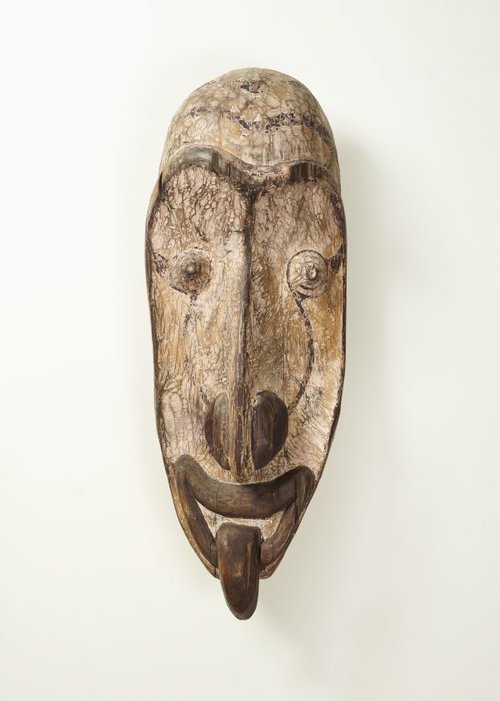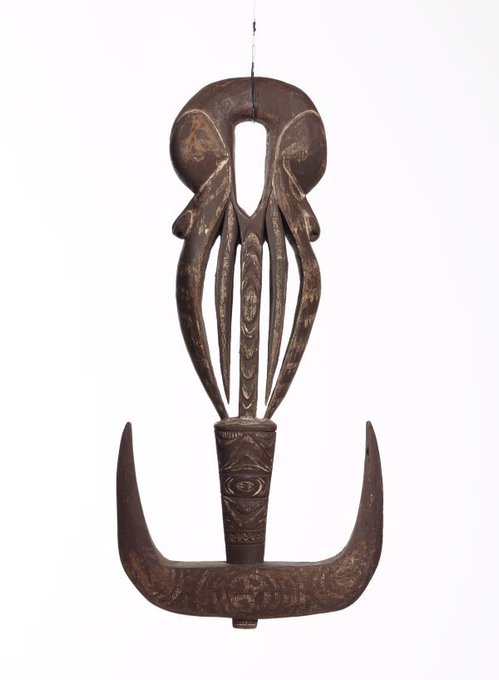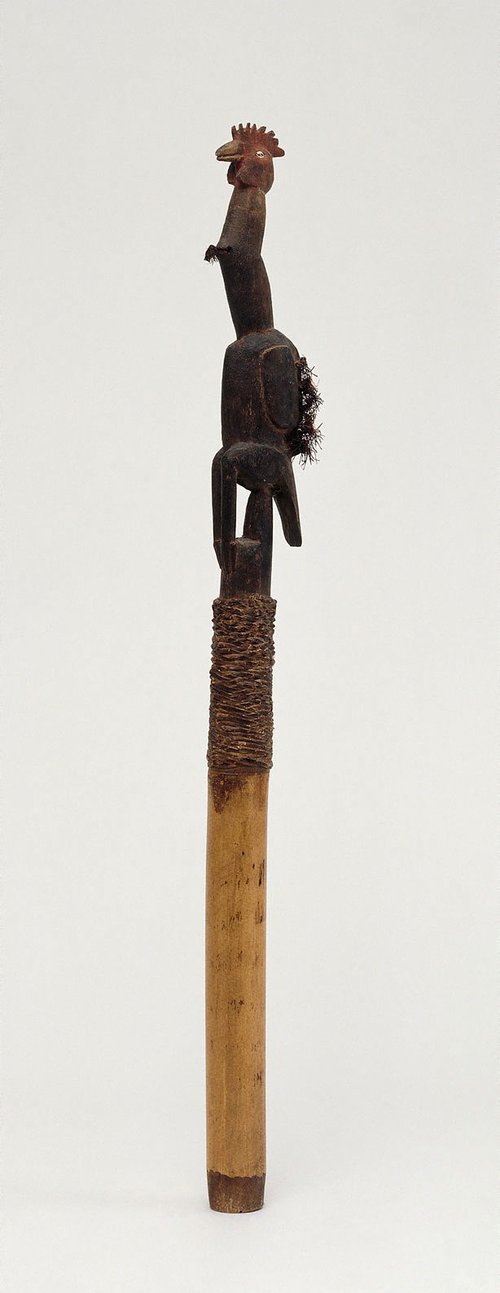Title
Suspension hook, female figure
early 20th century-mid 20th century
collected 1965
Artist
-
Details
- Place where the work was made
-
Yentchan Village
→
Middle Sepik River
→
East Sepik Province
→
Papua New Guinea
- Cultural origin
- Iatmul people
- Dates
- early 20th century-mid 20th century
collected 1965 - Media category
- Sculpture
- Materials used
- wood, rattan cane, white and orange ochre natural pigments
- Dimensions
- 86.0 cm x 26.0 x 5.0 cm (excl. rattan hanging loop)
- Credit
- Purchased 1965
- Location
- Not on display
- Accession number
- 426.1994
- Artist information
-
Iatmul people
Works in the collection
- Share
-
-
About
Yentchan Village is located in East Sepik Province of Papua New Guinea, along the Middle Sepik River.
Basket hooks, or suspension hooks, are common in the villages along the Sepik River. They make up part of a typical household's furnishings together with Chambri clay fireplaces and storage jars, Biwat fish smoking pots, assorted fish baskets and nets.
The hooks are hung from the beams inside and under the houses and looped string bags, plaited baskets and other containers filled with items such as yams are hung from the hooks. This helps keep food and other articles stored safely out of the reach of children, dogs and rodents.
© Art Gallery of New South Wales, 2005
-
Bibliography
Referenced in 1 publication
-
Peter Laverty (Editor), Art Gallery of New South Wales Quarterly (vol. 13, no. 4), Sydney, Jul 1972, 697 (illus.). "The primitive art area is temporarily situated on the first floor. Exhibits are from the Sepik River, New Guinea, along with a grave-symbol figure from New Hebrides, in the left foreground". The 'Suspension hook' is seen on the wall, together with other works collected by Tuckson in the 1960s and early 1970s.
-



